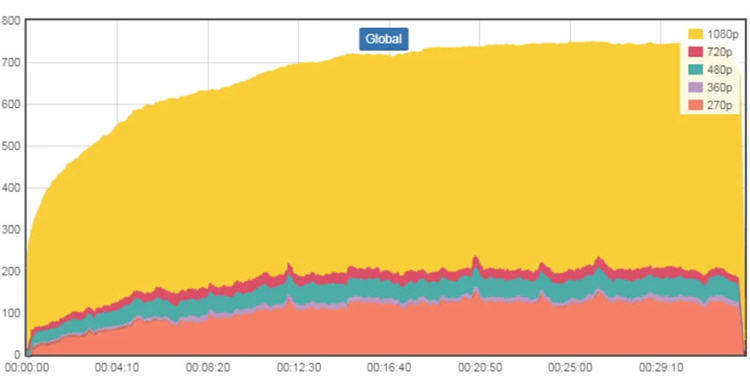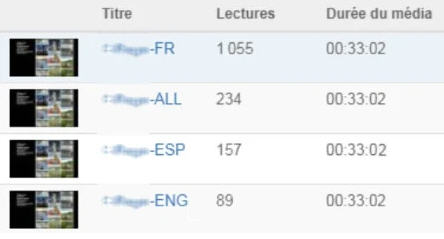A shooting you can’t miss
All company executives are keen to send their best wishes to their employees at the beginning of the year. It’s an opportunity to reflect on the past year, to set the context of the activity and to motivate the teams for the next 12 months. New Year’s greetings are a traditional event, but with the pandemic limiting gatherings and driving those who can to work from home, online video is the only way to address the entire company. This is especially true when teams are spread out over several locations or continents.
Greetings are a delicate exercise in several respects: in terms of content, when the context does not encourage optimism, but also in terms of form when you are not used to expressing yourself live in front of a camera or when technical incidents may occur.

There is then a very simple solution, which consists in recording the message and broadcasting it as if it were a live broadcast. The process is called “simulcasting”. The collective meeting is thus preserved and the message is under control. You can take the time to fine-tune the image and the sound, to multiply the camera angles for less stress of the speaker, to start again what was missed (stammering, unfortunate slip of the tongue, technical incident…), to subtitle everything and to translate the speech if necessary. All things you won’t be able to do with Zoom, Teams or Skype. The result will be more spontaneous, warmer, more polished and more professional. It will also be achieved at a lower cost because for the same rendering, it is more economical to make a recording than a live broadcast.
Let’s summarize the need:
- Create an event, invite all your employees to a ‘mass’, at a given date and time.
- Make this event accessible by all means, on all media
- Subtitle in advance: for the hearing impaired, for people who will follow the message without putting on the sound, and for your international teams or your clients who will have access to subtitles in their language.
- Have the possibility to make the event public or private, to propose a simple invitation mode, to ask for a password if necessary…
- Do not saturate the company’s internal network by offering an adaptive streaming. Allow secure access from the Internet for employees working from home or connected from a smartphone.
- Track the number of viewers in real time and have detailed viewing statistics.
- Optionaly, associate to the broadcast a means of expression of your audience (form of sending comments, thread of discussion (chat), poll…
- Propose a replay for those who could not be available for the live broadcast.
It will be easier to have someone accompany you to make a good video than a good live one.
As for solutions, you can always broadcast the video you have recorded in “true live” (or “live streaming”). To do this, you need to use an encoder (hardware or software), have access to the live streaming platform and have a fast and stable connection during the entire broadcast.
All these conditions disappear with simulcasting: You just have to send your video and schedule its broadcast. In your program, you can even link a still image announcing the meeting, a countdown to make people wait until the beginning (and reinforce the idea of live), and then your greeting video.
Simulcasting is a “no worries” insurance policy.
Here is an example of statistics collected during the broadcast of a greeting message in several languages, using StreamOut :

The French message was at least partially followed by more than 1000 employees, with about 750 people watching during the last 15 minutes. A large majority watched in Full HD, because the company network allowed it and because many viewers were using their own connection, fixed or mobile.

If you are interested and want to try StreamOut for your 2022 wishes, do not hesitate to contact us.
